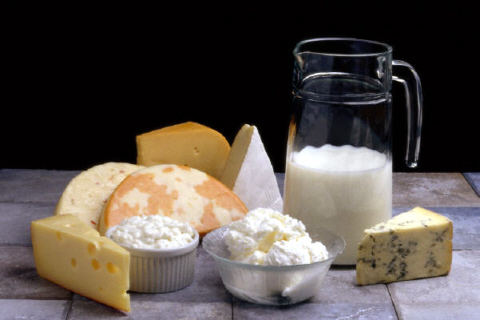|
DECEMBER
2010
�������������������������������������������� ��������������������������������������������������������������������������������������������������������
30th December 2010 - New research
THE RISK OF CANCER IN PARKINSON'S DISEASE
Movement Disorders [2010] 25
(12) : 1809-1817 (Lo RY, Tanner CM, Van Den Eeden SK, Albers KB, Leimpeter AD,
Nelson LM.)
Complete abstract
Cancer has often been linked positively or negatively with Parkinson's Disease.
The aim of this study was to evaluate the occurrence of cancer before and after
the diagnosis of Parkinson's Disease. The prevalence of cancer was not found to
be significantly lower in people with Parkinson's Disease as had been previously
claimed. However, among
 specific
cancers, melanoma was found to be more common among people with
Parkinson's Disease. This increased prevalence was not related to the use of
dopaminergic drugs such as L-dopa and dopamine agonists. So they are not the
cause.
Parkinson's Disease and
the skin are oddly associated, because both dopamine, whose deficiency causes
Parkinson's Disease, and melanin, the pigment that causes skin to darken, are both
made from L-dopa. So the inability to produce sufficient L-dopa that causes
Parkinson's Disease� would also affect the ability to produce sufficient
L-dopa in order to produce the melanin pigment that protects skin against the
sun. In order to refer to this
article on its own
click here. specific
cancers, melanoma was found to be more common among people with
Parkinson's Disease. This increased prevalence was not related to the use of
dopaminergic drugs such as L-dopa and dopamine agonists. So they are not the
cause.
Parkinson's Disease and
the skin are oddly associated, because both dopamine, whose deficiency causes
Parkinson's Disease, and melanin, the pigment that causes skin to darken, are both
made from L-dopa. So the inability to produce sufficient L-dopa that causes
Parkinson's Disease� would also affect the ability to produce sufficient
L-dopa in order to produce the melanin pigment that protects skin against the
sun. In order to refer to this
article on its own
click here.
�
22nd December 2010 - New research
DAIRY PRODUCTS AND PARKINSON'S DISEASE
Parkinsonism Related Disorders
[2010] Dec 17 [Epub ahead of print] (Miyake Y, Tanaka K, Fukushima W, Sasaki S,
Kiyohara C, Tsuboi Y, Yamada T, Oeda T, Miki T, Kawamura N, Sakae N, Fukuyama H,
Hirota Y, Nagai M)
Complete abstract
Previous studies reported that dairy product consumption was significantly
associated with an increased risk of Parkinson's Disease in men, but not in
women. As it was suggested that higher consumption of dairy products could
increase the risk of Parkinson's Disease, some people with Parkinson's Disease
have been cutting down their dairy product consumption, and altering their
vitamin D intake. However, when researchers re-examined the
 relationship
between the consumption of dairy products, calcium, vitamin D and the risk of
Parkinson's Disease, they found nothing to support previous claims.� No
relationship was observed between the intake of milk, yogurt, cheese, or ice
cream and the risk of Parkinson's Disease. There was no measurable association
between the consumption of calcium or vitamin D and Parkinson's Disease. Previous researchers did not explain any possible relationship.
Neither calcium nor vitamin D
are involved in the formation of dopamine, the substance whose deficiency causes
Parkinson's Disease.�In order to refer to this
article on its own
click here. relationship
between the consumption of dairy products, calcium, vitamin D and the risk of
Parkinson's Disease, they found nothing to support previous claims.� No
relationship was observed between the intake of milk, yogurt, cheese, or ice
cream and the risk of Parkinson's Disease. There was no measurable association
between the consumption of calcium or vitamin D and Parkinson's Disease. Previous researchers did not explain any possible relationship.
Neither calcium nor vitamin D
are involved in the formation of dopamine, the substance whose deficiency causes
Parkinson's Disease.�In order to refer to this
article on its own
click here.
�
14th December 2010 - New book
ENCEPHALITIS LETHARGICA : DURING AND AFTER THE
EPIDEMIC
Joel Vilensky
 Publisher's
description : During the 1920s and 1930s a strange condition affected much of
the world. This condition became much better known because of the
book and
movie,
Awakenings, in which L-dopa was used as a treatment. The condition, encephalitis lethargica, could cause death in
a short period. Its symptoms were thought to encompass almost anything
imaginable. Furthermore, even in those patients who appeared to recover from the
disease, there was a large risk that they would subsequently develop a more
chronic and devastating sequel believed to follow the disease in up to 80% of
its victims, postencephalitic Parkinsonism.�This book describes
the disease during the epidemic period and details cases reported since that time.�
Click here for more details.
For
more books concerning Parkinson's Disease go to
Parkinson's Disease Books. Publisher's
description : During the 1920s and 1930s a strange condition affected much of
the world. This condition became much better known because of the
book and
movie,
Awakenings, in which L-dopa was used as a treatment. The condition, encephalitis lethargica, could cause death in
a short period. Its symptoms were thought to encompass almost anything
imaginable. Furthermore, even in those patients who appeared to recover from the
disease, there was a large risk that they would subsequently develop a more
chronic and devastating sequel believed to follow the disease in up to 80% of
its victims, postencephalitic Parkinsonism.�This book describes
the disease during the epidemic period and details cases reported since that time.�
Click here for more details.
For
more books concerning Parkinson's Disease go to
Parkinson's Disease Books.
�
8th December 2010 - New review
TOXIC CAUSES OF PARKINSON'S DISEASE
 There
are now fourteen known toxic causes of Parkinson's Disease : pesticides
(Paraquat, Rotenone, Maneb), solvents (Trichloroethylene, Toluene, N-Hexane,
Carbon disulfide), MPTP, Mercury, Manganese, Copper, Carbon monoxide, Lead,
Cyanide. Although Agent Orange is widely claimed to be a toxic cause of
Parkinson's Disease, not even one study in the entire medical literature has
ever shown that to be true. Toxicity has the potential to be the sole cause of
Parkinson's Disease. To very varying extents, toxicity can also be a partial
cause of Parkinson's Disease. Symptoms normally develop when toxic exposure
occurs or soon after, or increase over time as exposure to toxicity
persists. Symptoms do not develop decades after exposure as is often
claimed. There is a tendency for toxic effects to decline over time,
but with some toxic substances that can take years. There
are now fourteen known toxic causes of Parkinson's Disease : pesticides
(Paraquat, Rotenone, Maneb), solvents (Trichloroethylene, Toluene, N-Hexane,
Carbon disulfide), MPTP, Mercury, Manganese, Copper, Carbon monoxide, Lead,
Cyanide. Although Agent Orange is widely claimed to be a toxic cause of
Parkinson's Disease, not even one study in the entire medical literature has
ever shown that to be true. Toxicity has the potential to be the sole cause of
Parkinson's Disease. To very varying extents, toxicity can also be a partial
cause of Parkinson's Disease. Symptoms normally develop when toxic exposure
occurs or soon after, or increase over time as exposure to toxicity
persists. Symptoms do not develop decades after exposure as is often
claimed. There is a tendency for toxic effects to decline over time,
but with some toxic substances that can take years.
The prevalence of Parkinson's
Disease that is due to toxicity is not known. However, the evidence suggests
that the number of people whose Parkinson's Disease is due to toxicity is very
low, being the exception rather than the norm. The toxic causes of Parkinson's
Disease each cause different symptoms because of the different biochemical means
by which toxicity is caused, and because of the other biochemical functions that
each of the particular toxins affects.
In order to cause Parkinson's Disease,
the level of toxic exposure usually has to be either acute or chronic. Mild
exposure to some of the known toxic causes would have no noticeable effect. Some
other potentially toxic causes of Parkinson's Disease, such as copper and
manganese are actually beneficial to health in normal quantities, and can only
cause Parkinson's Disease in very large quantities. For a completely
comprehensive, fully referenced, up to date and printable summary of each of the
toxic causes of Parkinson's Disease, go to
Toxic causes of Parkinson's Disease In order to refer to this
article on its own
click here.
�
7th December 2010 - New book
DEEP BRAIN STIMULATION MANAGEMENT
William J.Marks Jnr.
 Publisher's
description : Deep Brain Stimulation Management is a practical guide to the use
of this paradigm-shifting therapy for movement disorders, including Parkinson's
disease, essential tremor, and dystonia. An essential resource for clinicians
who wish to begin utilizing DBS, as well as current practitioners seeking to
improve their understanding and application of the technique. Highly illustrated
and in full color throughout, this comprehensive book covers the key aspects of
DBS practice, including patient selection, device programming and activation to
achieve optimum symptom control, long-term management, and trouble-shooting. It
has contributions from experienced clinical leaders in the
field of DBS.�
Click here for more details.
For
more books concerning Parkinson's Disease go to
Parkinson's Disease Books. Publisher's
description : Deep Brain Stimulation Management is a practical guide to the use
of this paradigm-shifting therapy for movement disorders, including Parkinson's
disease, essential tremor, and dystonia. An essential resource for clinicians
who wish to begin utilizing DBS, as well as current practitioners seeking to
improve their understanding and application of the technique. Highly illustrated
and in full color throughout, this comprehensive book covers the key aspects of
DBS practice, including patient selection, device programming and activation to
achieve optimum symptom control, long-term management, and trouble-shooting. It
has contributions from experienced clinical leaders in the
field of DBS.�
Click here for more details.
For
more books concerning Parkinson's Disease go to
Parkinson's Disease Books.
�
��
|
.gif)
.gif)
 specific
cancers, melanoma was found to be more common among people with
Parkinson's Disease. This increased prevalence was not related to the use of
dopaminergic drugs such as L-dopa and dopamine agonists. So they are not the
cause.
Parkinson's Disease and
the skin are oddly associated, because both dopamine, whose deficiency causes
Parkinson's Disease, and melanin, the pigment that causes skin to darken, are both
made from L-dopa. So the inability to produce sufficient L-dopa that causes
Parkinson's Disease� would also affect the ability to produce sufficient
L-dopa in order to produce the melanin pigment that protects skin against the
sun. In order to refer to this
article on its own
specific
cancers, melanoma was found to be more common among people with
Parkinson's Disease. This increased prevalence was not related to the use of
dopaminergic drugs such as L-dopa and dopamine agonists. So they are not the
cause.
Parkinson's Disease and
the skin are oddly associated, because both dopamine, whose deficiency causes
Parkinson's Disease, and melanin, the pigment that causes skin to darken, are both
made from L-dopa. So the inability to produce sufficient L-dopa that causes
Parkinson's Disease� would also affect the ability to produce sufficient
L-dopa in order to produce the melanin pigment that protects skin against the
sun. In order to refer to this
article on its own
 relationship
between the consumption of dairy products, calcium, vitamin D and the risk of
Parkinson's Disease, they found nothing to support previous claims.� No
relationship was observed between the intake of milk, yogurt, cheese, or ice
cream and the risk of Parkinson's Disease. There was no measurable association
between the consumption of calcium or vitamin D and Parkinson's Disease. Previous researchers did not explain any possible relationship.
Neither calcium nor vitamin D
are involved in the formation of dopamine, the substance whose deficiency causes
Parkinson's Disease.�In order to refer to this
article on its own
relationship
between the consumption of dairy products, calcium, vitamin D and the risk of
Parkinson's Disease, they found nothing to support previous claims.� No
relationship was observed between the intake of milk, yogurt, cheese, or ice
cream and the risk of Parkinson's Disease. There was no measurable association
between the consumption of calcium or vitamin D and Parkinson's Disease. Previous researchers did not explain any possible relationship.
Neither calcium nor vitamin D
are involved in the formation of dopamine, the substance whose deficiency causes
Parkinson's Disease.�In order to refer to this
article on its own
 Publisher's
description : During the 1920s and 1930s a strange condition affected much of
the world. This condition became much better known because of the
Publisher's
description : During the 1920s and 1930s a strange condition affected much of
the world. This condition became much better known because of the
 There
are now fourteen known toxic causes of Parkinson's Disease : pesticides
(Paraquat, Rotenone, Maneb), solvents (Trichloroethylene, Toluene, N-Hexane,
Carbon disulfide), MPTP, Mercury, Manganese, Copper, Carbon monoxide, Lead,
Cyanide. Although Agent Orange is widely claimed to be a toxic cause of
Parkinson's Disease, not even one study in the entire medical literature has
ever shown that to be true. Toxicity has the potential to be the sole cause of
Parkinson's Disease. To very varying extents, toxicity can also be a partial
cause of Parkinson's Disease. Symptoms normally develop when toxic exposure
occurs or soon after, or increase over time as exposure to toxicity
persists. Symptoms do not develop decades after exposure as is often
claimed. There is a tendency for toxic effects to decline over time,
but with some toxic substances that can take years.
There
are now fourteen known toxic causes of Parkinson's Disease : pesticides
(Paraquat, Rotenone, Maneb), solvents (Trichloroethylene, Toluene, N-Hexane,
Carbon disulfide), MPTP, Mercury, Manganese, Copper, Carbon monoxide, Lead,
Cyanide. Although Agent Orange is widely claimed to be a toxic cause of
Parkinson's Disease, not even one study in the entire medical literature has
ever shown that to be true. Toxicity has the potential to be the sole cause of
Parkinson's Disease. To very varying extents, toxicity can also be a partial
cause of Parkinson's Disease. Symptoms normally develop when toxic exposure
occurs or soon after, or increase over time as exposure to toxicity
persists. Symptoms do not develop decades after exposure as is often
claimed. There is a tendency for toxic effects to decline over time,
but with some toxic substances that can take years.
 Publisher's
description : Deep Brain Stimulation Management is a practical guide to the use
of this paradigm-shifting therapy for movement disorders, including Parkinson's
disease, essential tremor, and dystonia. An essential resource for clinicians
who wish to begin utilizing DBS, as well as current practitioners seeking to
improve their understanding and application of the technique. Highly illustrated
and in full color throughout, this comprehensive book covers the key aspects of
DBS practice, including patient selection, device programming and activation to
achieve optimum symptom control, long-term management, and trouble-shooting. It
has contributions from experienced clinical leaders in the
field of DBS.�
Publisher's
description : Deep Brain Stimulation Management is a practical guide to the use
of this paradigm-shifting therapy for movement disorders, including Parkinson's
disease, essential tremor, and dystonia. An essential resource for clinicians
who wish to begin utilizing DBS, as well as current practitioners seeking to
improve their understanding and application of the technique. Highly illustrated
and in full color throughout, this comprehensive book covers the key aspects of
DBS practice, including patient selection, device programming and activation to
achieve optimum symptom control, long-term management, and trouble-shooting. It
has contributions from experienced clinical leaders in the
field of DBS.�